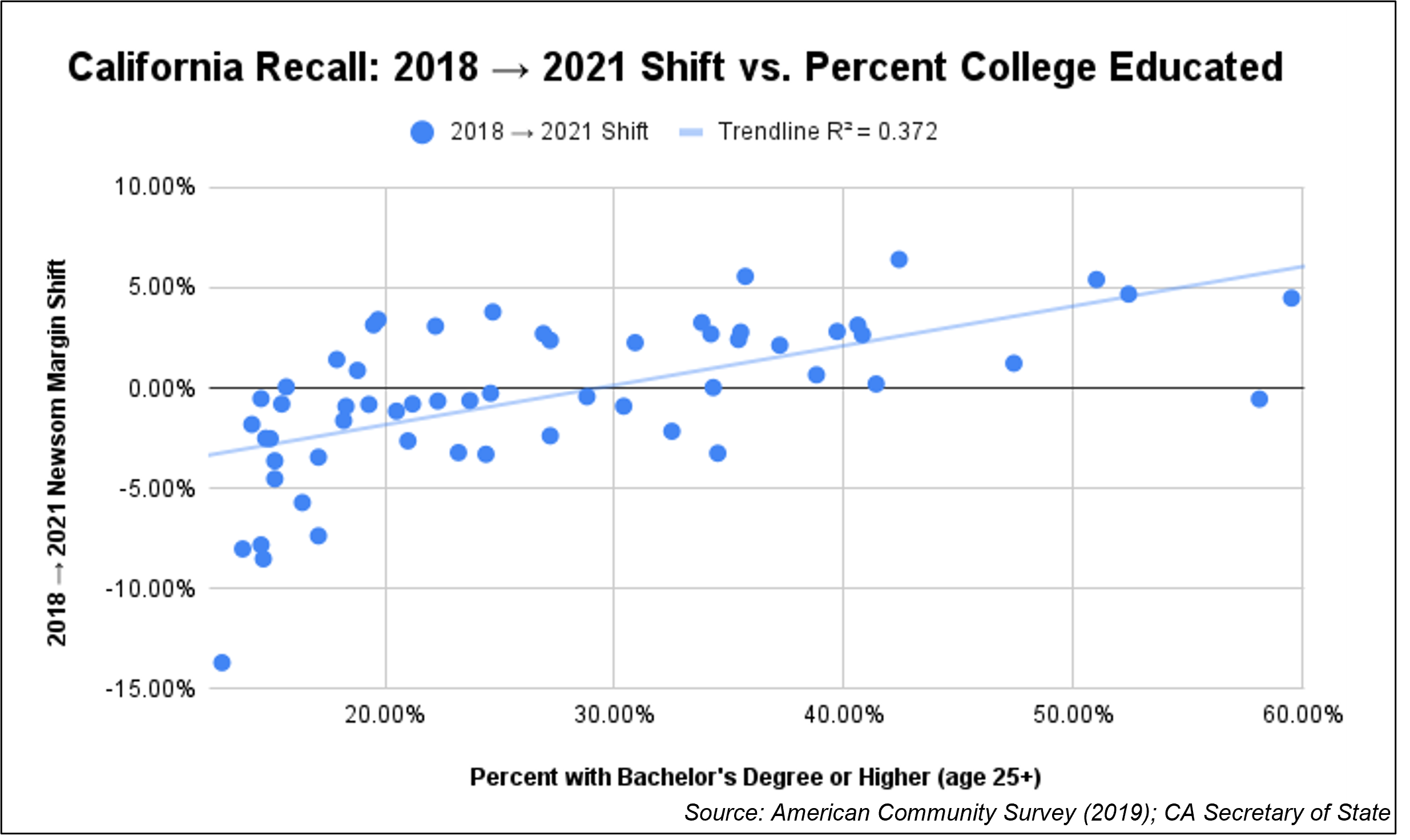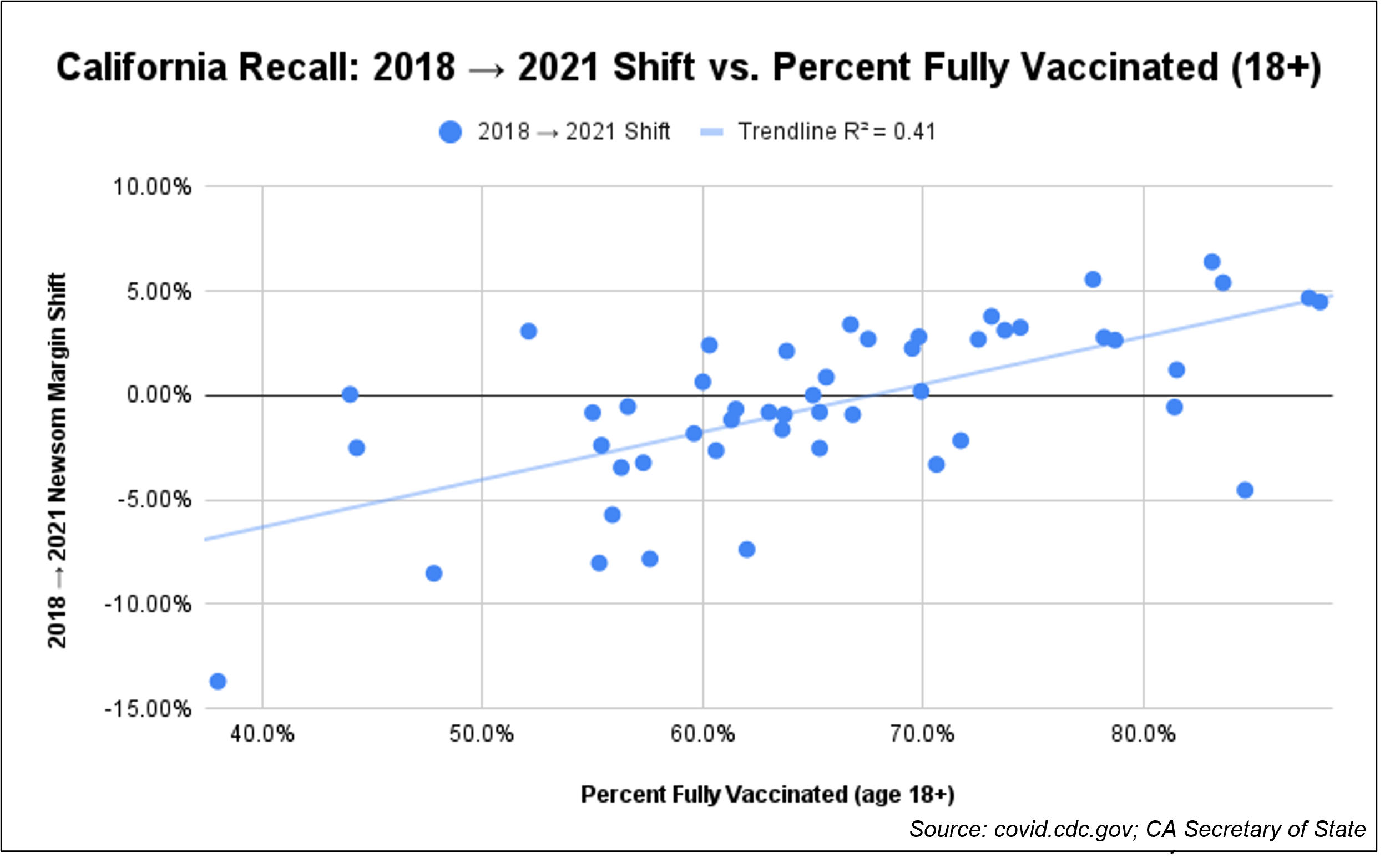California Governor: Education Continues to be Key Vote Indicator
October 26, 2021 · 11:01 AM EDT
A month after polls closed, California has finally finished counting all the ballots for the recall election. In the end, it wasn’t close — Democratic Gov. Gavin Newsom prevailed 62-38 percent. While polling pointed to a relatively competitive race for a few weeks, Newsom actually matched his margin from the 2018 gubernatorial election.
Democrats in California and across the nation are certainly happy with Newsom’s resounding victory, seeing it as vindication of their strategy of aggressively taking the fight to Republicans on hot-button issues such as vaccines, masks, and abortion. Republicans, on the other hand, may dismiss the California results on the basis that it’s a deep blue state and conservative talk radio host Larry Elder was controversial.
However, it’s worth analyzing some interesting trends within the California results as both parties look ahead to the 2022 midterm elections.
Education polarization
Perhaps the most important demographic trend over the past five years has been education polarization — non-college-educated voters have been getting more Republican while college-educated voters have been getting more Democratic. Strong gains with college-educated voters propelled Democrats to the House majority in 2018 and helped Joe Biden build back the “Blue Wall” in 2020.
A key question over the past year has been whether or not Democratic gains among college-educated voters, especially in the suburbs, will persist now that Trump is no longer president. And similarly, whether or not Republican gains with non-college-educated voters will continue.

The California results by county seem consistent with the theory that education polarization is continuing, and perhaps getting stronger. Compared to his 2018 election, Newsom tended to gain ground in highly educated counties (r2 = 0.372) while losing ground in less highly educated counties.
Eight of nine counties where more than 40 percent of adults have a bachelor’s degree or higher shifted towards Newsom. Many of these counties are in the San Francisco Bay Area. The largest shift was in Contra Costa County, where 42 percent of adults have a bachelor’s degree or higher and Newsom’s margin increased from 36 points in 2018 to 43 points in 2021. Notably, the once-GOP dominated Orange County shifted from a 0.3-point Newsom win in 2018 to a 3-point Newsom win in 2021.
Seventeen of 22 counties where less than 20 percent of adults have a bachelor’s degree or higher shifted towards Republicans. These counties are mostly further inland and/or in the northern part of the state. The county with the biggest shift to the right was Lassen County, where 13 percent of adults have a bachelor’s degree or higher and the Republican margin increased from 55 points in 2018 to 68 points in 2021.
Vaccination polarization
Voting shifts in California counties were also highly correlated with vaccination rates. Newsom tended to gain more ground relative to 2018 in highly vaccinated counties (r2 = 0.41). Twelve of 16 counties with greater than 70 percent adult vaccination rates shifted towards Newsom, while 12 of 14 counties with less than 60 percent adult vaccination rates shifted towards Republicans. In fact, the 2018→2021 Newsom margin shift had a higher correlation with vaccination rates than educational levels.

Of course, there’s also a strong relationship between vaccination rates and education rates (r2 = 0.56) — more highly educated counties tend to have higher vaccination rates. So some of the increased polarization by education may have been because of increased polarization by vaccination status, and vice versa.
Intuitively, it makes sense that vaccination rates could explain voting shifts. Vaccine mandates were a top issue in the California recall campaign, so voters may have polarized more than usual based on their vaccination status.
The Bottom Line
It can be tough to extrapolate definitive conclusions based on one election, especially one with an unusual format and some unique candidates. But the California results may be a clue that education polarization is here to stay, even without Trump in office.
If this is the case, it may be helpful for Democrats in the Virginia gubernatorial race, where Democrats have made strong gains in recent years in the northern Virginia suburbs. If Biden’s low approval rating numbers prove to be a substantial drag on Democrat Terry McAuliffe’s numbers, it may be highly educated counties like Fairfax, Loudoun, and Prince William that save him.